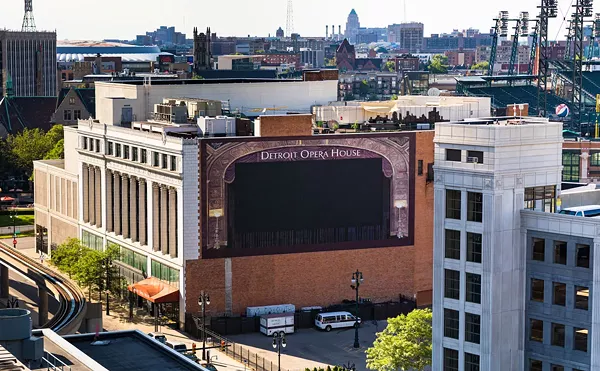The first summer after I got married, when relations with my brothers- and sisters-in-law were still coalescing, I was invited to join my wife’s older brother Mark and two of his buddies on their annual portaging pilgrimage up north. I thought it was a nice gesture and since Mark had recently moved from Detroit to South Florida with his family, I felt it would be a good opportunity to hang out and establish a friendship. The offer, which came packaged in a broader conversation about summer camp, was accepted as casually as it was tendered — more as an aside than intentional.
After hanging up the phone and sharing the news with my wife, she was excited and somewhat surprised by my acceptance. When I asked about the surprise part, she answered my question by asking a question: “You do know what portaging is, right?” Indignantly, I replied, “Of course I do — (pause) — not know what that is, but I’ll look it up.”
I consulting my bible — the dictionary: “Portaging is the practice of carrying a watercraft over land, between two bodies of water.”
No need for self-actualization on that one; I’m a town mouse, not a country mouse. I didn’t grow up in a family where lakes and fishing, canoes or campers were a holiday du jour. I could order you a tequila popper, or ask for the bathroom in Spanish by age 12, but carrying a watercraft over land seemed more foreign than a beach in Acapulco. What the hell kind of “watercraft” could be carried, anyway?!
As the vacation drew near, I conducted a serious inventory of the things one would need on such a trip. I realized, with only days left before departure, I was kind of screwed. I did, however, have a descent rucksack.
It’s not that the idea of “roughing it” was a foreign concept. Having backpacked across much of continental Europe, I’ve stayed in shitholes that would make any pup tent seem luxurious. Yet, the thought of relieving myself in a hand-dug latrine seemed more gross than serene.
Mark, my still newish brother-in-law, arrived from Ft. Lauderdale to Detroit the morning of our watercraft-carrying adventure. By that evening I got the on-deck call, letting me know he was headed to my house, after which we would hook up with his buddies and hit the road.
I concede: I was sweating it big time. I had no idea what to expect, nor did I know the guys I would be dependent on to ensure I didn’t drown or get eaten by God-knows whatever resided in the woods. I did take some comfort that: No. 1 … I was married to Mark’s sister, so he was somewhat obligated to guarantee she didn’t become a widow, and; No. 2 … even though these dudes were country mice, they weren’t country bumpkins. Mark is a cardiologist, and his two buddies: a neurologist and a custom-home builder. I figured, at worst, I was going into the backwoods with two physicians and an expert in construction.
Mark came over around 10:30 p.m.all geared up — bandana on his head — and psyched to get on the road. First we had to grab his buddies, both of whom lived in, or adjacent to, my neighborhood; then the market — to stock up on “provisions.”
I thought, “provisions, holy shit … how could I be going somewhere I would need ‘provisions!’”
“Awesome,” I said. “Let’s go get … those.”
So, at 11-something p.m., there we were, four portaging fools walking up and down the food aisles at Meijer’s, that venerable Detroit-area sanctuary for 24-hour shopping where worlds collide in commonality during the late night procurement window: Packs of drunken teens, one of whom inevitably ends up puking down the cereal aisle; drug tweekers, their carts filled with half-used cans of whipped cream; and, for me always the most curious — the couple with that wide-awake, pajama-clad toddler, strolling along and buying produce or frozen TV dinners.
Mark and his buddies were bananas excited. The three of them, all a high school epoch older than me, had been taking this trip together for years; one was his grad school roomate and the other his best friend from childhood.
The guys explained that we had to be selective in what we bought since everything we purchased would have to be carried by a member of our group. I decided to hang back, letting the experts decide our menu.
We got small things, like cans of tuna, boxes of add-water-only meal “helpers” and various other foodstuffs that seemed slightly one step above the freeze-dried crap sporting goods stores carry for campers.
The consensus among the experts was that the “special” meal, meaning the one not found in box or can, would be enjoyed that first night, since perishables were a luxury that wouldn’t keep beyond Day No. 1. Apparently, steaks were de rigueur — I was a vegetarian; I grabbed a can of soda.
Land Lubber’s Launch
Getting on the road sometime after midnight, we drove northeast toward Sarnia and the Bluewater Bridge, which would be our gateway to Canada. We were headed to Algonquin Provincial Park in Ontario, which is 240 miles northeast of Toronto and, as described by Mark, is as close to Eden as we mortals can hope to get.
Thankfully, I was able to knock off in the backseat for nearly the entire drive, waking up as dawn was breaking — I’m not a fan of long car rides.
After more than seven hours en route, we approached one of the park’s entrance gates. Several kilometers of winding road later we reached the outfitter’s lodge. “Holy cow,” I thought, “this is real.”
We secured the rental of two canoes for our 5-day, 4-night adventure and, within 30 minutes of arrival, the four of us paired up and launched from the docks.
“This isn’t so bad,” I thought. It was actually pretty decent. Two or three hours later, of course, the novelty of paddling along miles of nautical waterway toward our first camp waned. It was sometime around noon when we pulled up toward the shore.
We hopped out of the canoes, dragged the watercraft onto the beach, and found a clearing by the water’s edge that was suitable to make camp.
Poor Mark was beat after having stayed awake throughout the night, driving toward this yearly respite. At some point later in the day he ended up nodding off, his head propped up on a boulder.
As dusk settled in, Mark and his one friend set up their pup tents while his other friend and I searched for firewood.
That night, with our camp made and a fire lit, the bacchanalian steakfest commenced. The three friends enjoyed their meat while trading memories of funny moments from previous years’ trips. As a stranger in a strange land, I just took it all in — as well as a shot or two of the communal bourbon; some liquid courage and I felt sufficiently ready for what lay ahead.
The next morning I learned, first-hand, what the dictionary had weakly tried to describe. Rucksacks on our backs, the pairs of us grabbed our canoes out of the water and carried them — overhead — about one kilometer to the next launch point.
It was hot, muggy, and for anyone who has ever trekked in damp, bug-laden forest during summertime, add the weight of a rucksack and canoe, and you know this trip was not for the physically faint of heart. Yet, I also dug the appeal of its ruggedness. It was prototypical self-dependence. No valet was coming to carry the canoe. No tiki bar waiting at the next beach. Making it to the next leg of the journey, we headed off.
Mother Nature’s Opus
Algonquin is truly an amazing place. Pristine, expansive — the park covers 2,946 square miles — and bio-diverse. Its Earth science attributes include glaciofluvial landforms, formed by meltwater channels during past glacial drainage, according to the Friends of Algonquin Park website.
The park is an example of a typical ice stagnation environment, born from glacial encompassing and retreat; it holds surficial features like eskers, terraces, deltas, outwash plains, sand dunes, beach ridges, meltwater channels and boulder deposits.
According to park geologists, Algonquin also contains the largest kame-moraine complex in the region. There is also a fault canyon (Barron Canyon)and Brent Crater, which was formed by a meteorite strike.
The area’s latitudinal position resulted in southern hardwood forests merging with northern coniferous forests, creating a diverse presence of birds from both timberlands. Outside of New York’s Central Park, I don’t know another place in the Northeast where such diversity exists in such a concentrated area — more than 272 different species, according to park geologists.
More than 50 species of mammals have been recording within the park’s boundaries, too, most of which we thankfully had no encounter with. There was the thrill of seeing a brown bear cub picking berries adjacent to the shore during one of our canoeing commutes. The majority of game animals one could see include moose, white-tailed deer, beavers, black bears and wolves.
With all those mammles, the fear of becoming a news clip with the title, “When Animals Attack,” was never too far from any of our minds. Each night, after we’d let the fire die out, one of us would make sure our foodstuffs were securely hung by rope, along a tree branch, off the ground. However, those asshole raccoons reminded me there was little room for error when I left an errant orange in my rucksack one night.
While we never did any fishing, the park has more than 1,500 lakes, 930-plus miles of streams, and countless ponds and bogs. Park geologists say more than 50 different species of fish live inside Algonquin’s boundaries; the two largest fisheries are brook and lake trout but other species, such as
Smallmouth bass, lake whitefish, yellow perch, northern pike, muskellunge and walleye also call the park home.
After that first 24 hours, and my baptism by fire had concluded, I allowed myself to drink in Algonquin’s splendor. From the call of the loons during dusk to the amazing nighttime sky, where the absence of light pollution gives you an unrivaled view of the Milky Way, the trip became for me what my fellow portageniks had crowed about: wondrous, physically laborious and friendship-enduring.
I am still a town mouse, but by the end of the trip there was no question in my mind as to why my country mice friends looked forward to this trip each year. The sense of peace that nature instills, a feeling of accomplishment from tackling the physical demands that portaging asks, and the inherent education associated with living off the land, are all aspects of life no town mouse should ever go without knowing.
Would I do it again? Probably.
Would I recommend it? Without a doubt, yes.
Bryan Gottlieb is the editor-in-chief of Metro Times. Contact him at bgottlieb@metrotimes.com






